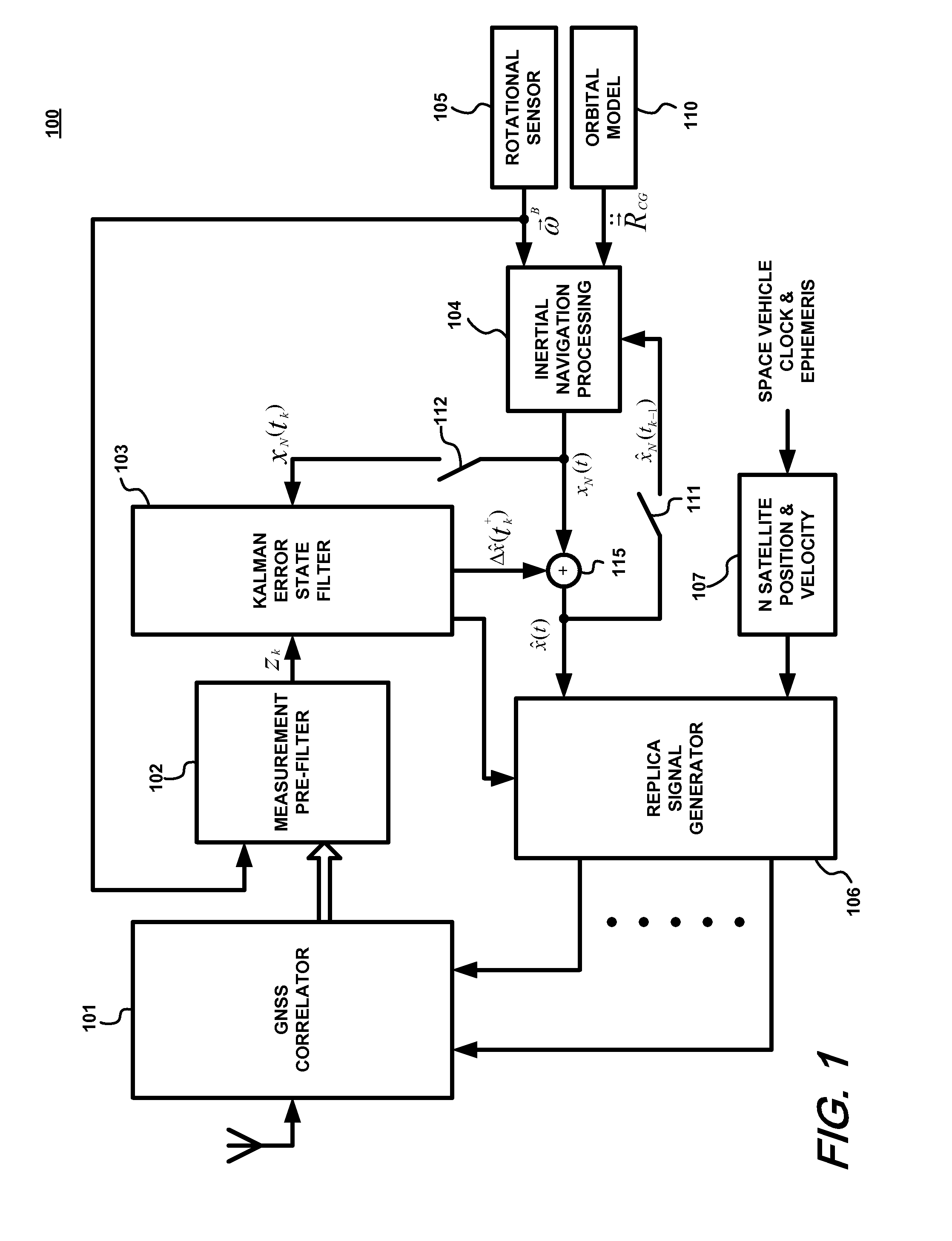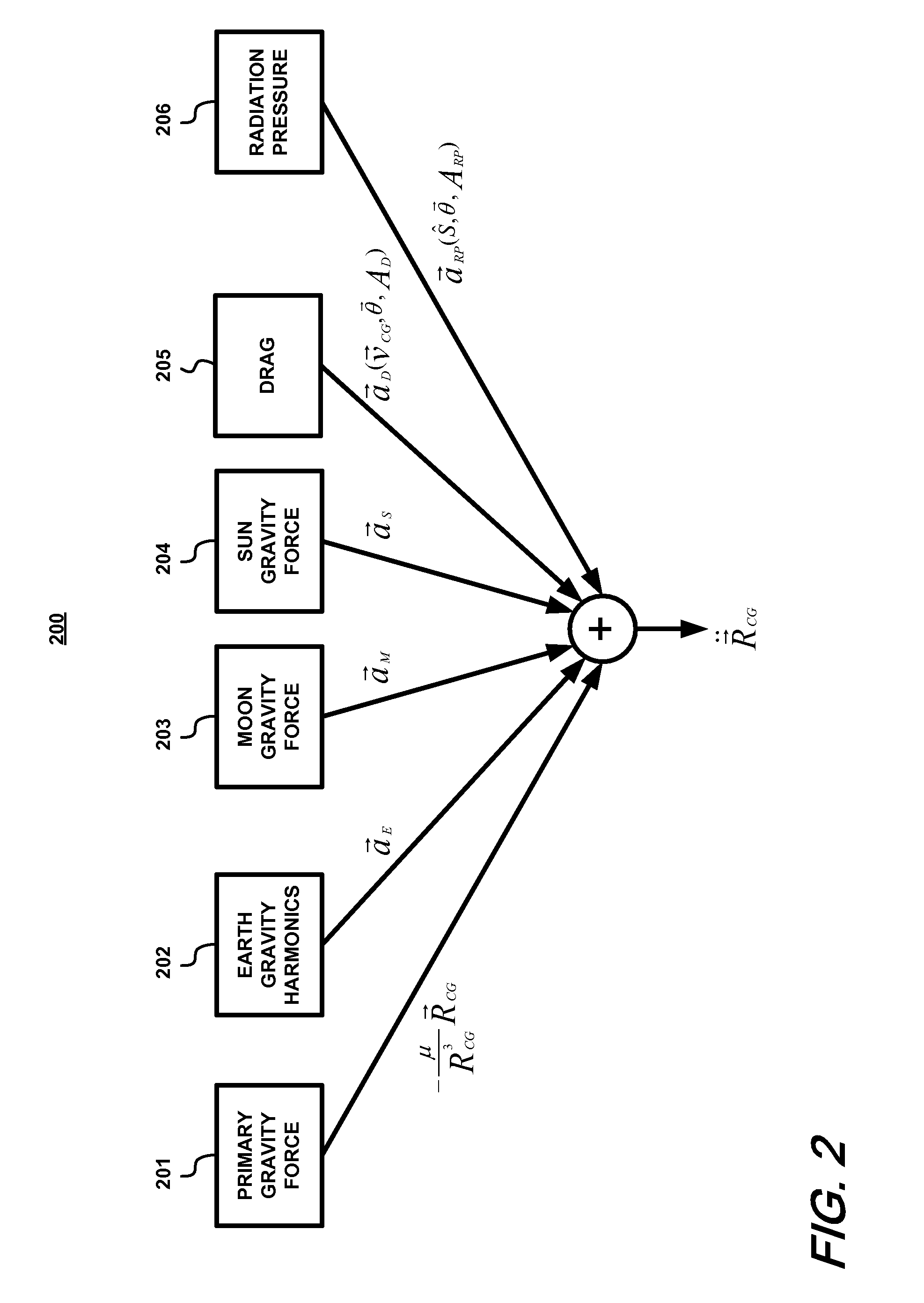Ultra-tightly coupled global navigation satellite system space borne receiver system
a global navigation satellite and space borne receiver technology, applied in navigation instruments, instruments for comonautical navigation, instruments for navigation, etc., can solve the problems of weaker received gnss signals, reduced availability, and high relative velocities and doppler effects, and achieves tight coupling (utc), precise position, velocity and time determination, and robust operation
- Summary
- Abstract
- Description
- Claims
- Application Information
AI Technical Summary
Benefits of technology
Problems solved by technology
Method used
Image
Examples
Embodiment Construction
[0020]FIG. 1 shows a block diagram of an exemplary embodiment of a Global Navigation Satellite System (GNSS) receiver 100 in accordance with the present invention for use in a space platform, such as a satellite, for example. The vehicle which carries the receiver 100 will be referred to herein as the platform. The exemplary GNSS receiver 100 comprises a GNSS correlator block 101, a measurement pre-filter block 102, a Kalman error state filter block 103, an inertial navigation processing block 104, a rotational sensor block 105, an orbital model block 110, a replica signal generator block 106, and a satellite position and velocity block 107. The GNSS receiver 100 employs several of the same elements as a conventional GPS / INS UTC UE, such as described in U.S. Pat. No. 6,516,021, including blocks 101-107. U.S. Pat. No. 6,516,021 is hereby incorporated by reference in its entirety into the present Patent Application. As will be described in greater detail below, however, the inertial n...
PUM
 Login to View More
Login to View More Abstract
Description
Claims
Application Information
 Login to View More
Login to View More - R&D
- Intellectual Property
- Life Sciences
- Materials
- Tech Scout
- Unparalleled Data Quality
- Higher Quality Content
- 60% Fewer Hallucinations
Browse by: Latest US Patents, China's latest patents, Technical Efficacy Thesaurus, Application Domain, Technology Topic, Popular Technical Reports.
© 2025 PatSnap. All rights reserved.Legal|Privacy policy|Modern Slavery Act Transparency Statement|Sitemap|About US| Contact US: help@patsnap.com



